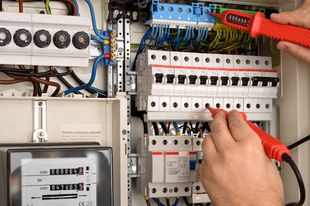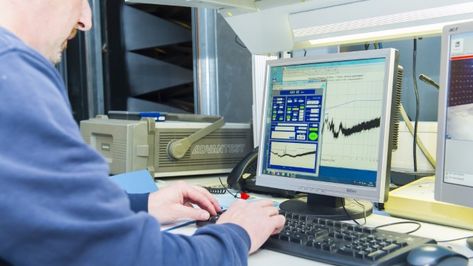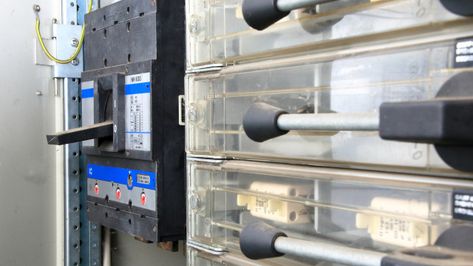Measuring the protective conductor resistance
Not all devices have a protective conductor. But if the device has a protective conductor, then its proper connection must be verified. Only a continuous protective conductor can fulfil its intended function properly. This protective measure relies on the fact that in the event of a short circuit (e.g. a chafed cable in the appliance that comes into contact with the conductive housing), the current that flows is dissipated via the protective conductor. The aim is for as large a current as possible to flow so that the upstream fuse can switch off quickly and the contact voltage at the device stays low.
Limit values of the VDE 0701-0702 standard
For devices up to 16 A rated current (i.e. usually earthing contact plug or "three-phase" connection CEE 16 A) the following applies:
- maximum 0.3 Ω for connection lines up to 5 m and
- for longer lines, 0.1 Ω can be added for each additional 7.5 m. This applies up to a maximum value of 1 Ω. For example, according to the standard, the 50 m long cable on a cable drum may have a maximum protective conductor resistance of 0.9 Ω.
The limit values mentioned above are much too high for larger cross-sections. Therefore, since 2008, the following applies to devices with a rated current of more than 16 A: The limit value is calculated from
- the length and the cross-section
- the material of the cable and the contact resistances.




Do you have a question?
Do you want to have an offer?
Reasons for measuring the protective conductor resistance
To determine the protective conductor resistance, a test current specified in the standards is passed through the protective conductor. This test current generates a voltage drop at the protective conductor, which is measured. The protective conductor resistance is calculated from the level of the test current and the voltage drop.
The measurement of the protective conductor resistance is to prove the low-resistance continuity of the protective conductor. On work equipment of protection class I, the protective conductor resistance is measured between the protective contact of the plug and the touchable conductive parts that are connected to the protective conductor for protective purposes.


